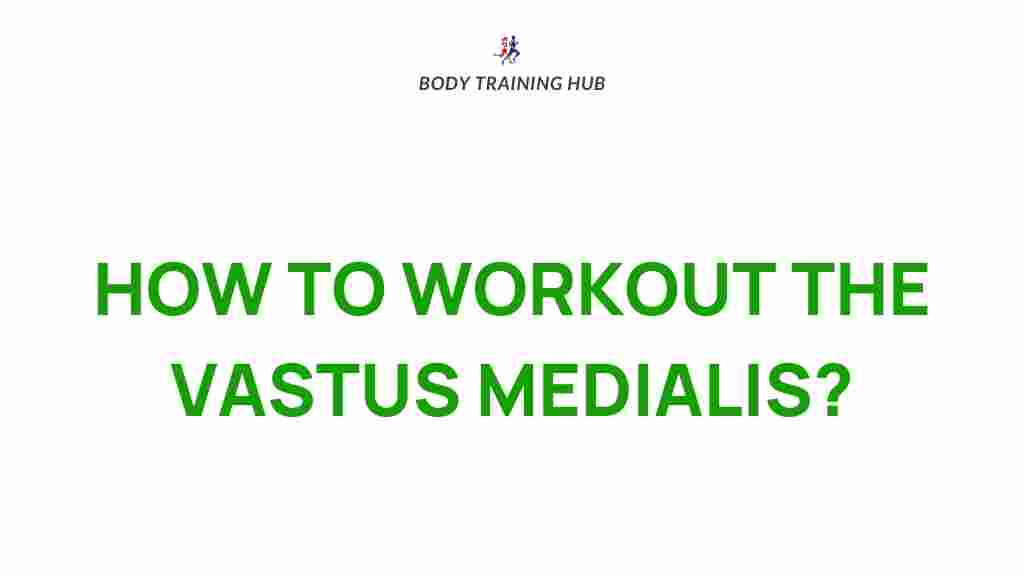What is the Vastus Medialis?
The vastus medialis, also known as the teardrop muscle due to its distinctive shape, is one of the four muscles that make up the quadriceps group. Located on the inner part of the thigh, this muscle plays a critical role in stabilizing the knee and supporting leg movements like running, squatting, and jumping.
Building a strong and well-defined vastus medialis not only enhances the aesthetics of your legs but also improves functional performance, preventing injuries and boosting overall athletic ability.
Why Should You Focus on the Vastus Medialis?
While all quadriceps muscles are essential, the vastus medialis deserves special attention for several reasons:
- Knee Stability: It helps stabilize the patella, reducing the risk of knee injuries.
- Improved Performance: A strong vastus medialis contributes to better squats, lunges, and other leg-intensive exercises.
- Aesthetic Appeal: Developing this muscle adds definition to the inner thigh, contributing to a balanced leg appearance.
Common Signs of a Weak Vastus Medialis
If your vastus medialis is underdeveloped, you might notice:
- Knee pain or discomfort, especially during physical activities.
- Poor balance or instability in the lower body.
- Difficulty achieving full depth in squats or other leg exercises.
Effective Exercises to Target the Vastus Medialis
To strengthen your vastus medialis, incorporate the following exercises into your routine. Focus on proper form and controlled movements to maximize effectiveness.
1. Squats with a Narrow Stance
Squats are a fundamental exercise for leg development. Adjusting your stance to be narrower places greater emphasis on the inner thighs and the vastus medialis.
- Stand with your feet shoulder-width apart or slightly closer.
- Lower your body into a squat, ensuring your knees track over your toes.
- Engage your core and drive through your heels to return to the starting position.
2. Bulgarian Split Squats
This unilateral exercise strengthens the legs while targeting stabilizer muscles, including the vastus medialis.
- Position one foot on a bench behind you and the other firmly on the ground.
- Lower your body until your front thigh is parallel to the ground.
- Push through the front foot to rise back up.
3. Step-Ups
Step-ups are excellent for targeting the vastus medialis while improving balance and coordination.
- Place one foot on a sturdy platform or bench.
- Push through your heel to lift your body onto the platform.
- Step down slowly and repeat on the opposite leg.
4. Terminal Knee Extensions (TKEs)
This exercise directly isolates the vastus medialis, making it a must-have for knee rehabilitation and strengthening.
- Attach a resistance band to a sturdy anchor point at knee height.
- Place the band around the back of your knee and step back to create tension.
- Straighten your leg by contracting the vastus medialis, then return to the starting position.
Tips for Optimizing Your Vastus Medialis Workouts
Here are some key tips to ensure your workouts effectively target the vastus medialis:
- Focus on Full Range of Motion: Engage the muscle fully by performing exercises through a complete range of motion.
- Control the Tempo: Slow, deliberate movements activate the muscle more effectively than fast, uncontrolled reps.
- Consistency is Key: Incorporate vastus medialis-specific exercises into your routine at least twice a week.
- Warm-Up Properly: Prepare your muscles and joints with dynamic stretches before starting your workout.
Troubleshooting Common Challenges
Pain in the Knee
If you experience knee pain during exercises targeting the vastus medialis, check your form. Ensure your knees are aligned with your toes and avoid locking them during movements.
Uneven Development
If one leg seems stronger than the other, incorporate unilateral exercises like Bulgarian split squats or step-ups to address the imbalance.
Plateau in Progress
To overcome a plateau, vary your routine by introducing new exercises or adjusting the intensity with weights or resistance bands.
FAQs About the Vastus Medialis
Q: How long does it take to see results?
A: With consistent effort, you may notice improvements in strength and definition within 6-8 weeks.
Q: Can I train the vastus medialis every day?
A: While it’s important to challenge the muscle, allow at least 48 hours between sessions to promote recovery and growth.
Q: Are there any tools or equipment to enhance vastus medialis workouts?
A: Resistance bands, dumbbells, and stability balls can add variety and intensity to your exercises.
Conclusion: Unlock the Potential of Your Vastus Medialis
Focusing on your vastus medialis is a game-changer for building stronger, more balanced legs. By incorporating targeted exercises, following proper form, and addressing challenges proactively, you can optimize your leg workouts and enjoy improved performance, aesthetics, and knee stability.
Ready to take your leg training to the next level? Check out our comprehensive guide to lower body workouts for more insights and techniques. For further information on the vastus medialis, visit this reliable resource.
This article is in the category Strength & Recovery and created by BodyTraining Team
